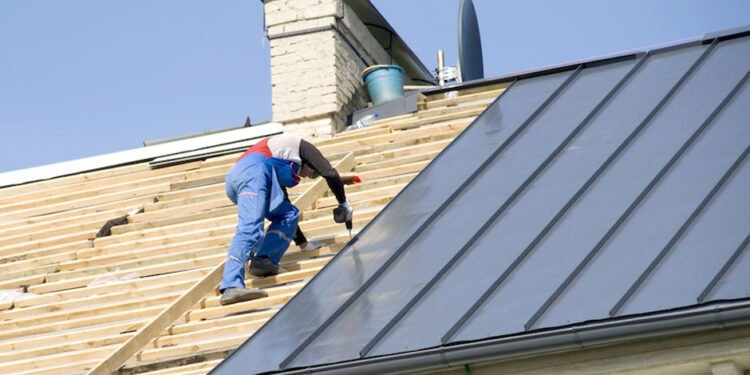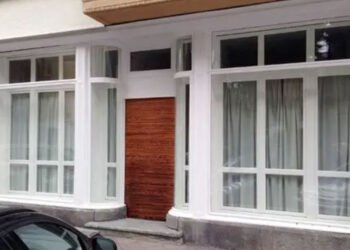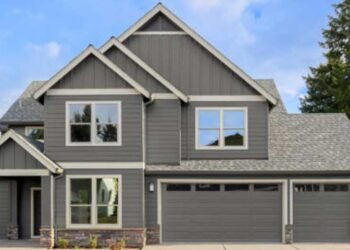In the evolving landscape of residential construction, the emphasis on sustainability has brought energy-efficient roofing to the forefront of eco-friendly initiatives. Companies like J&J Roofers in Portland exemplify the industry’s shift towards integrating green practices, highlighting the increasing demand for homes that are both environmentally conscious and energy-efficient. Energy-efficient roofing is not merely a trend but an essential aspect of sustainable living, Harper Management notes, offering a means to diminish the building’s carbon footprint while enhancing its functionality and aesthetic appeal.
Introduction to Energy-Efficient Roofing
Energy-efficient roofing, a pivotal component of modern sustainable architecture, comprises an array of materials and designs specifically engineered to curtail a home’s energy consumption and mitigate its environmental impact. These innovative roofing systems, characterized by their ability to reflect a substantial amount of sunlight and minimize heat absorption, starkly contrast with conventional materials that often contribute to elevated indoor temperatures. The result is a substantial decrease in the reliance on air conditioning, leading to noteworthy energy conservation.
This strategic approach to roofing is not solely about improving a building’s thermal efficiency but also plays a crucial role in the broader environmental agenda aimed at diminishing greenhouse gas emissions. By integrating materials that provide superior insulation and reflectivity, energy-efficient roofing transcends its primary function as a shelter, becoming an active participant in the global effort to combat climate change. The drive behind these advancements is the aspiration to amalgamate architectural excellence with environmental stewardship, ensuring that buildings contribute positively to the ecological balance.
Benefits of Eco-Friendly Roofing Materials
The adoption of eco-friendly roofing materials offers a plethora of benefits, extending beyond the immediate environmental impact. These materials significantly improve a home’s insulation properties and are more effective in reflecting solar radiation, which collectively contributes to a marked decrease in energy expenses.
The economic benefits are complemented by the environmental advantage of utilizing materials that are either recycled or sourced from sustainable processes, thereby minimizing the ecological footprint of the construction activity. Moreover, these materials often possess a longer lifespan, reducing the need for frequent replacements and further contributing to waste reduction.
Types of Energy-Efficient Roofing Options
The spectrum of energy-efficient roofing options is diverse, with each type offering unique benefits. Solar tiles, for instance, not only serve the traditional role of a roof but also double as a source of renewable energy, capturing solar power to generate electricity.
Green roofs, which feature a layer of vegetation, act as natural insulators, improving a building’s energy efficiency while also creating habitats for urban wildlife and contributing to urban air quality. Cool roofs, characterized by their high solar reflectance, directly combat heat absorption, maintaining cooler indoor temperatures and reducing the urban heat island effect. These options illustrate the industry’s shift towards multifunctional roofing solutions that prioritize energy efficiency and environmental sustainability.
Considerations for Choosing the Right Roofing Material
The selection of the most appropriate roofing material is a critical decision that hinges on various factors, including the specific climatic conditions of the area, the architectural design of the building, budget constraints, and long-term sustainability objectives. For instance, in regions with high solar exposure, materials with high reflective properties would be ideal.
Conversely, in cooler climates, materials that offer better insulation might be more suitable. The architectural style of the home also plays a significant role, as the roofing material should complement the overall design aesthetic. Furthermore, the economic aspect, including initial installation costs and potential energy savings, must be carefully evaluated to ensure that the chosen roofing solution is both cost-effective and environmentally sustainable.
The Future of Eco-Friendly Roofing Technologies
The trajectory of eco-friendly roofing technologies is marked by continuous innovation and a steadfast commitment to environmental stewardship. Future advancements are anticipated to offer even more integrated and efficient solutions, wherein roofing materials will not only provide protection from the elements but also actively contribute to energy generation and climate regulation.
As the pursuit of sustainability becomes increasingly imperative in the face of global environmental challenges, the role of energy-efficient roofing in the construction of eco-friendly homes cannot be overstated. With companies like J&J Roofers in Portland leading the way, the industry is witnessing a paradigm shift towards the adoption of roofing solutions that epitomize the principles of sustainability.
Conclusion
Energy-efficient roofing represents a significant stride towards sustainable building practices, offering a practical solution to reducing energy consumption and minimizing environmental impact. These roofing systems, through their innovative design and materials, not only enhance the thermal performance of buildings but also contribute to the global initiative of reducing greenhouse gas emissions. As the construction industry continues to evolve, the adoption of energy-efficient roofing will play a pivotal role in shaping eco-friendly homes that are not only energy-efficient but also harmonious with the environment.
This shift towards greener roofing options underscores the broader commitment to sustainable development and the collective responsibility to safeguard our planet for future generations. Through continuous innovation and commitment to sustainability, energy-efficient roofing will undoubtedly remain at the forefront of eco-friendly construction practices, leading the way towards a more sustainable and environmentally conscious future.












